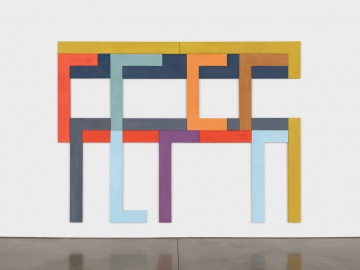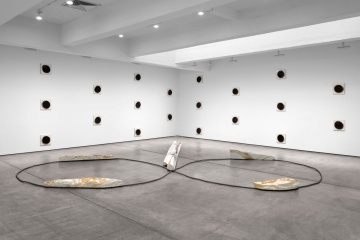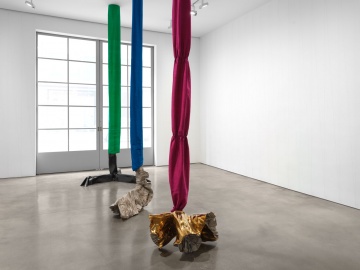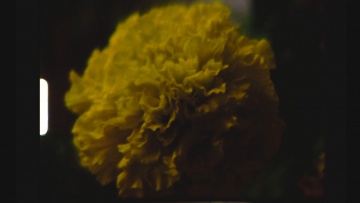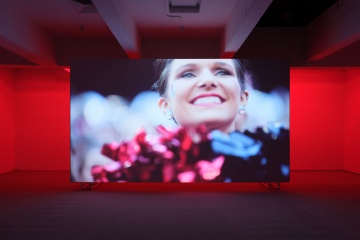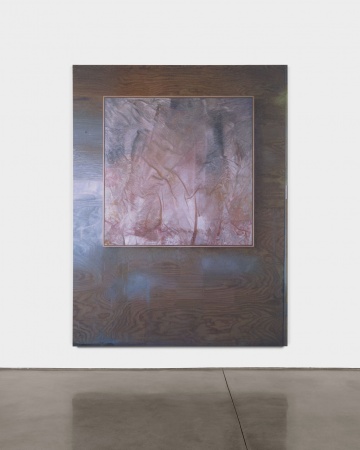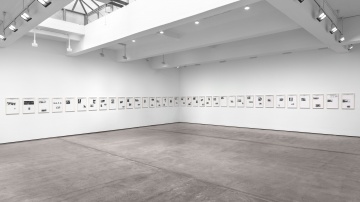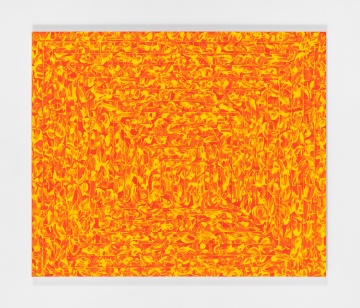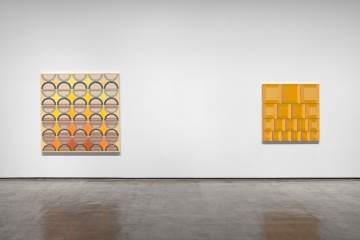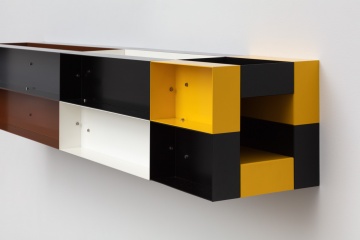Paula Cooper Gallery
529 West 21st Street
New York, NY 10011
212 255 1105
Also at:
534 West 21st Street
New York, NY 10011
212 255 1105
521 West 21st Street
New York, NY 10011
212 255 1105
New York, NY 10011
212 255 1105
Also at:
534 West 21st Street
New York, NY 10011
212 255 1105
521 West 21st Street
New York, NY 10011
212 255 1105
Paula Cooper Gallery, the first art gallery in SoHo, opened in 1968 with an exhibition to benefit the Student Mobilization Committee to End the War in Vietnam. The show included works by Carl Andre, Dan Flavin, Donald Judd, Robert Mangold and Robert Ryman, among others, as well as Sol LeWitt’s first wall drawing. For fifty years, the gallery’s artistic agenda has remained focused on, though not limited to, conceptual and minimal art.
In 1996, the gallery moved to Chelsea to occupy an award-winning redesigned 19th century building. The architect was Richard Gluckman. In 1999, Paula Cooper opened a second exhibition space on 21st Street. In 2020, the Gallery was pleased to open a new, seasonal location in Palm Beach, Florida.
Beyond its immediate artistic program, the gallery has regularly hosted concerts, music symposia, dance performances, book receptions, poetry readings, as well as art exhibitions and special events to benefit various national and community organizations. For 25 years until 2000, the gallery presented a much celebrated series of New Year’s Eve readings of Gertrude Stein’s The Making of Americans and James Joyce’s Finnegans Wake.
Artists Represented:
Carl Andre
Estate of Terry Adkins
Tauba Auerbach
Estate of Jennifer Bartlett
Estate of Bernd and Hilla Becher
Céleste Boursier-Mougenot
Cecily Brown
Sophie Calle
Beatrice Caracciolo
Estate of Sarah Charlesworth
Estate of Bruce Conner
Estate of Jay DeFeo
Mark di Suvero
Sam Durant
Estate Luciano Fabro
Matias Faldbakken
Ja'Tovia Gary
Liz Glynn
Robert Grosvenor
Hans Haacke
Estate of Douglas Huebler
Michael Hurson
Julian Lethbridge
Estate of Sol LeWitt
Eric N. Mack
Christian Marclay
Justin Matherly
Peter Moore
David Novros
Estate of Claes Oldenburg & Coosje van Bruggen
Paul Pfeiffer
Walid Raad
Veronica Ryan
Joel Shapiro
Rudolf Stingel
Kelley Walker
Dan Walsh
Meg Webster
Robert Wilson
Jackie Winsor
Bing Wright
Carey Young
Works Available By:
Jonathan Borofsky
Dan Flavin
Donald Judd
Sherrie Levine
Jan Schoonhoven
Atsuko Tanaka
Alan Shields
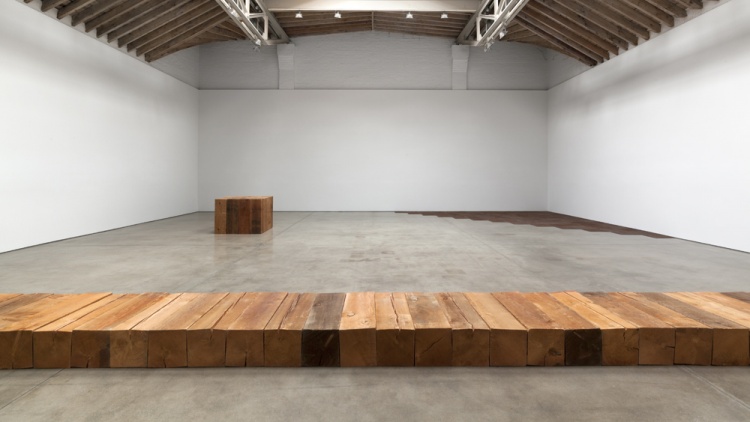
Exhibition view of Carl Andre, at Paula Cooper Gallery, New York, 2014. © Carl Andre / VAGA 2014. Courtesy Paula Cooper Gallery, New York.
Sarah Charlesworth
Sarah Charlesworth: Seduction and Desire
February 20, 2025 - April 12, 2025
Sarah Charlesworth (1947–2013) is known for her conceptually driven and visually alluring photo-based works that subvert and deconstruct cultural imagery. Entitled Desire and Seduction, the current exhibition will examine how these themes emerged and recurred within Charlesworth’s work from the early 1980s through the mid-2000s. Populated with fetish objects and silken fabrics, isolated body parts and masked strangers, the exhibition invites the viewer to locate their own desire.
Beginning with her celebrated Objects of Desire series (1983–88), Charlesworth sought to make visible the “shape of desire.”[1] Meticulously excising images from a range of sources—including fashion magazines, pornography, and archeological textbooks—she then re-photographed the cutouts against fields of pure color. In each work, Charlesworth has paired the image with a signifying color: red (sexual passion), black (dominance or death), green (natural growth), yellow (material value), blue (spiritual or metaphorical desire). The prints are enclosed within coordinated lacquered wood frames and either stand alone or are combined in diptychs and triptychs.
The earliest works in the exhibition address sexuality through gender stereotypes, such as the toned male torso outlined in clinging wet fabric in White T-Shirt (1983), a sweep of voluminous locks in Blonde (1983–84) and the anonymous wedding dress in Bride (1983–84). Charlesworth disrupts the viewer’s expectations in Red Mask (1983) with an image of an onnagata Kabuki actor playing the role of a geisha. In the two-part work Figures (1983), a silk evening gown is juxtaposed with a satin bondage suit on black and red backgrounds, intertwining dominance, power and passion.
Both the finesse of Charlesworth’s seductive Cibachrome prints and her fascination with the iconography of desire were expanded in subsequent series, which often employed familiar motifs. Maintaining a focus on isolated images in saturated fields of color, from 1992 onwards Charlesworth’s photographs were composed and produced in her studio using the camera as a tool to conjure fantasies of her own imagination. For example, the cut-out image of an elusive Red Scarf from 1983 reappeared wrapped around a pair of heads in Red Veils (1992–93), and a thick red curtain is parted to make room for a telescope’s shaft in Untitled (Voyeur) (1995). In Pleasure of the Text (1992–93) Charlesworth invokes the use of silk in magic tricks by concealing an open book beneath a luxurious white scarf and suspending the composition against a black background. Presenting mysterious scenes imbued with unresolved intrigue, these works incite desire for the impossible.
Sarah Charlesworth (1947-2013) has been the subject of one-person exhibitions at a number of institutions including the major survey, “Sarah Charlesworth: Doubleworld,” at the New Museum, New York (2015), which traveled to the Los Angeles County Museum of Art (2017); and a retrospective organized by SITE Santa Fe (1997), which traveled to the Museum of Contemporary Art, San Diego (1998), the National Museum of Women in the Arts, Washington, DC (1998), and the Cleveland Center for Contemporary Art (1999). Her work is in important public collections such as the Museum of Modern Art and the Metropolitan Museum of Art, New York; the Walker Art Center, Minneapolis; the Centre Pompidou, Paris; the Stedelijk Van Abbemuseum, Eindhoven; and the Victoria and Albert Museum, London. Charlesworth taught photography for many years at the School of Visual Arts, New York; the Rhode Island School of Design; and Princeton University.
[1] Sarah Charlesworth interviewed by Susan Fisher Sterling, March 23, 1997, in Sarah Charlesworth, SITE Santa Fe, 1997, p. 80
Robert Grosvenor
February 15, 2025 - March 22, 2025
An exhibition of recent sculpture and photography by Robert Grosvenor will survey his prolonged fascination with the aerodynamics of machinery. Since the 1980s, Grosvenor has applied his subtly elusive formal vocabulary to the vernacular of American car culture by transforming obsolete vehicles into inoperable sculptures. A series of exhibitions of uncannily altered vehicles isolated in striking or purpose-built spaces have frequently enshrined these works. Here, numerous sculptures are gathered under one roof in a lively installation that enhances their individual narrative qualities.
In the main room, a reflective deep purple sculpture is flanked with a vibrant green form on one side and a heavily rusted object on the other. Each work is a found object, perfected through small adjustments that enhance its existing form. The purple sculpture (Untitled, 2023) has no windshield and its headlights have been sprayed matte black, but it otherwise looks like it could be spurred into action. The green sculpture (Untitled, 2022) is smooth and pure, rocket-like, inanimately still. The rusted work (Untitled, 2022) was already romantically sculptural, the wooden planks of the truck bed aging like driftwood and its patina warm with wear. The machine still bears the name of its maker on its back, but the roof has been lowered to remove it completely from the realm of functionality. Arranged in a triangular formation facing the street with other smaller works surrounding them, the vehicles recall the gallery’s previous incarnation as a parking garage.
The front gallery contains a nautical sculpture (Untitled, 2023) stripped of its operative apparatus and leaning to one side. Painted in white and vibrant turquoise to accentuate its curves and points, the work is both familiar and ambiguous, imparting a distinct strangeness. On the surrounding walls are photographs of unlikely objects pictured against blue skies and green lagoons, complementing the sculpture in theme and tone. Some images depict vehicles and structures so characteristic of Grosvenor that one wonders if he made them himself. Animated with humor and vivid color, the photographs depict a compelling alternate reality.
Eric N. Mack
November 3, 2023 - December 16, 2023
Using fabric and other found objects, Eric N. Mack creates richly textured compositions that collapse the boundaries between fine art, fashion, and architecture. The artist identifies as a painter working in the medium of fabric, although his works frequently move away from the walls to synthesize painting with sculpture. Mack’s first one-person exhibition at Paula Cooper Gallery will open on November 3rd, following the announcement of his representation in 2021 and his inclusion in four group exhibitions since 2020. In the past year, Mack has completed residencies at the Chinati Foundation, Marfa, and the American Academy in Rome, and his site-specific installation Sarong is currently on display at Palazzo Grassi, Venice, through January 2024 as part of the group exhibition Chronorama Redux.
David Novros
David Novros: Wall Paintings
October 28, 2023 - December 2, 2023
A series of new paintings by David Novros will be exhibited at Paula Cooper Gallery in the fall of 2023. Monumentally scaled to the gallery’s main location at 534 West 21st Street, the works each measure between thirteen and fifteen feet wide and are comprised of modular painted panels and large open areas of wall. Novros is known for his meticulous attention to the materiality of color, and his newest paintings radiate with exceedingly vibrant and deep complementary hues. The exhibition will be accompanied by an illustrated catalogue with an essay by Ann Lauterbach.
Mark di Suvero
Mark di Suvero: Painting and Sculpture
September 9, 2023 - October 21, 2023
An exhibition of large-scale sculptures and paintings by Mark di Suvero will be on display at Paula Cooper Gallery from September 7th. The exhibition opens on the heels of Steel Like Paper, the most extensive survey of Mark di Suvero’s work in over thirty years at the Nasher Museum of Art (January 28 – August 27, 2023), and marks the esteemed sculptor’s ninetieth birthday (September 18, 2023).
Jay DeFeo
Inventing Objects: Jay DeFeo's Photographic Work
September 9, 2023 - October 28, 2023
Jay DeFeo began taking photographs in depth in 1970, shortly after the completion of her monumental 2000-pound marriage of painting and sculpture, The Rose (1958–1966), and her move from San Francisco to the relative seclusion of Marin County, California. Over the next five years, DeFeo engaged in a restless exploration of herself and her surroundings through the camera, producing an extraordinary wealth of deeply poetic images. With over seventy unique photographs, photocollages and photocopies, the exhibition at Paula Cooper Gallery will be the largest ever presentation of DeFeo’s photographic works, and the first exhibition devoted to DeFeo’s experiments across photographic media. Together with the new monograph Jay DeFeo: Photographic Work (DelMonico, 2023), with essays by Hilton Als, Judith Delfiner, Corey Keller, Justine Kurland, Dana Miller and Catherine Wagner, the exhibition sets the stage for serious consideration of DeFeo’s innovations in the medium of photography.
Luciano Fabro
May 6, 2023 - June 24, 2023
Paula Cooper Gallery is delighted to announce an expansive exhibition of works by Luciano Fabro across both New York galleries. This will be the gallery’s first one-person exhibition of Fabro’s work since announcing the representation of the artist in collaboration with the Archivio Luciano e Carla Fabro in 2021. It will also be the first exhibition of Fabro’s work in the US in eight years.
Known for his poetic, visual sensibility and intuitive forms, Fabro (1936–2007) was a central figure in the movement to redefine sculpture in post-war Italy. Closely associated with Arte Povera and included in the group’s first exhibition in Genoa in 1967, Fabro described himself as the ‘heretic’ of the movement—a position which granted him a broad, collective sense of culture that extended beyond a single nation or time period to embrace nature, mythology, and antiquity. Like his fellow poveristi, Fabro’s hybrid practices and radical tautology of materials prompted apt comparisons with the anti-form tendencies of conceptual and process-oriented art. And while many of Fabro’s works align with the dematerializing sentiment that was in the air in the 1960s and 1970s, he is distinguished by the unapologetic sensuality of his sculptures, richly endowed with traditions of the classical past. The late Germano Celant, a long-time champion of Fabro’s work, elegantly summarized this contradiction: “[Fabro] was willing to churn the avant-garde waters with his outright indulgence in Baroque pleasures.”[1]
[1] Germano Celant, “Luciano Fabro: The Image That Isn’t There,” Artforum vol. 27, no. 2, October 1988, p. 108
Luciano Fabro
May 6, 2023 - June 24, 2023
Paula Cooper Gallery is delighted to announce an expansive exhibition of works by Luciano Fabro across both New York galleries. This will be the gallery’s first one-person exhibition of Fabro’s work since announcing the representation of the artist in collaboration with the Archivio Luciano e Carla Fabro in 2021. It will also be the first exhibition of Fabro’s work in the US in eight years.
Known for his poetic, visual sensibility and intuitive forms, Fabro (1936–2007) was a central figure in the movement to redefine sculpture in post-war Italy. Closely associated with Arte Povera and included in the group’s first exhibition in Genoa in 1967, Fabro described himself as the ‘heretic’ of the movement—a position which granted him a broad, collective sense of culture that extended beyond a single nation or time period to embrace nature, mythology, and antiquity. Like his fellow poveristi, Fabro’s hybrid practices and radical tautology of materials prompted apt comparisons with the anti-form tendencies of conceptual and process-oriented art. And while many of Fabro’s works align with the dematerializing sentiment that was in the air in the 1960s and 1970s, he is distinguished by the unapologetic sensuality of his sculptures, richly endowed with traditions of the classical past. The late Germano Celant, a long-time champion of Fabro’s work, elegantly summarized this contradiction: “[Fabro] was willing to churn the avant-garde waters with his outright indulgence in Baroque pleasures.”[1]
[1] Germano Celant, “Luciano Fabro: The Image That Isn’t There,” Artforum vol. 27, no. 2, October 1988, p. 108
Tauba Auerbach
Free Will
March 18, 2023 - April 22, 2023
Tauba Auerbach will debut several new series of works which capture fleeting moments of order in paintings of foams, molten glass and woven beads. The exhibition is an expression of curiosity about spontaneously emergent structure, tendency and habit, and their intersection with the notion of free will. The work brings together historical rendering techniques like pointillism and midtone drawing with microscopy, algorithmic image processing, off-loom weaving, spraying techniques and mathematical surface modeling. This will be the artist’s fourth one-person exhibition at the gallery, and the first since their critically-acclaimed survey S v Z at the San Francisco Museum of Modern Art in 2021.
Hoping to be convinced of the reality of free will, Auerbach listened to a series of lectures in defense of its existence by the late mathematician John Conway. Best-known as the inventor of The Game of Life, a deterministic game using cellular automata, Conway would seem to be an unlikely advocate, but grounds his argument in quantum mechanics and relativity, proposing that particles also have free will.
A new series of paintings based on photographs of foam taken through a microscope use a pointillist technique to render arrangements of bubbles in the process of constantly repositioning themselves. Particulate fields of color yield to denser aggregations of dots that subtly define the contours of a transparent, unstable material. On nearby tables, tiny spheres come together to form tubes, ribbons and unusual surfaces, in sculptures woven from thousands of glass beads. The pieces continue the artist’s fond relationship with weaving, using a long existent off-loom technique that was further developed by chemist Bih-Yaw Jin and mathematician Kazunori Horibe to model molecules and topological surfaces. In the front gallery, new glass sculptures, made in the artist’s basement kiln, use surface tension and heat to draw a lace-like behavior from powdered glass.
Terry Adkins, Christian Marclay, Kelley Walker
March 18, 2023 - April 22, 2023
A group exhibition at 521 West 21st Street presents works by Terry Adkins, Christian Marclay and Kelley Walker, evincing the importance of music and sound as a boundless source of inspiration
for these visual artists.
Ja'Tovia Gary
You Smell Like Outside…
February 11, 2023 - March 11, 2023
For her second exhibition at Paula Cooper Gallery, Ja’Tovia Gary will premiere a new film, Quiet As It’s Kept, and a sculpture from her ongoing Citational Ethics series. The artist continues her practice of interrogating and re-contextualizing multiple archives, concerning herself with the power and responsibility of language and the radical possibilities of narrative. The exhibition title You Smell Like Outside… is a Black Southern phrase that foregrounds the artist’s specific cultural origins with discursive traditions that invoke an interior knowledge. Inspired by Toni Morrison’s 1993 Nobel Laureate lecture, Gary attempts to heighten the contradictions between a living and a dead language. Notions of domesticity, interior and exterior, and the conflict between perception and being perceived are explored in the show.
Hans Haacke
Taking Stock, 1975 – 1985
January 21, 2023 - March 4, 2023
An exhibition of works by Hans Haacke from 1975–1985 examines the deeply intertwined networks of politics, capital, and corporate sponsorship in the art world. With a profound commitment to social issues and razor-sharp wit, Haacke critiques bankers, brokers, advertising moguls and oil executives, each of whom have sought to offset contentious financial gains via strategic investment in art institutions. This will be the first Haacke exhibition in New York since his retrospective at the New Museum in 2019-2020, and will include works from the distinguished collection of Gilbert and Lila Silverman, Detroit.
Robert Grosvenor
January 6, 2023 - January 28, 2023
A prolonged fascination with the aerodynamics of machinery and vehicular shapes informs the refined form and vibrant color of Grosvenor’s recent sculpture. This exhibition follows Grosvenor’s participation in the 2022 Venice Biennale, where the artist installed three large-scale sculptures. One of these, an untitled work dated 2018, presented an orange scooter inside an industrial shipping container with a gold interior. This mesmerizing and subtly elusive work informed the artist’s new installation at Paula Cooper Gallery, which engages similar forms, materials, and ideas on an increased scale.
A vibrant orange vehicle without wheels sits directly on the floor. Adjacent to the vehicle, ten bowling pins are arranged in the triangular formation typical of the game. Positioned such that half of the triangle is directly in front of the vehicle, the composition is both deliberate and ambiguous, imparting a distinct strangeness.
A series of photographs taken between 2000 and 2013 translates Grosvenor’s formal vocabulary into two-dimensional images of everyday life. As with his sculptures, the photographs blur the boundaries between found object and artwork, presenting a breadth of objects in striking, often comical, arrangements. Themes of automation, containment and architecture connect the images, which picture vehicles and structures so characteristic of Grosvenor that one wonders if he made them himself. The commanding horizontality, cropped perspectives and silhouetted subjects offer a compelling and uncanny alternate reality.
Paul Pfeiffer
Red Green Blue
November 12, 2022 - January 12, 2023
Following the critically acclaimed live performance Amazing Grace / RGB at the Apollo Theater in 2019, Paul Pfeiffer and the University of Georgia Redcoat Band return to New York for the premiere of a new audio-visual installation. Titled Red Green Blue after the image display system based on the human perception of color, the film considers how multiple channels of sensory information are brought into alignment by presenting the Georgia Bulldogs stadium as a broadcast studio. This film is the first chapter of a forthcoming three-part installation.
The sports stadium is a site imbued with the potential to fortify national, regional, or community-based models of identity. Bombarded with carefully orchestrated stimuli, the spectator is immersed in a multi-sensory experience intended to incite an emotional response. In Red Green Blue, Pfeiffer edits audio and visual recordings of the Redcoat Marching Band performing the live musical soundtrack to a football game, examining the mechanics of the spectacle through close-up footage of band members and their directors during and between periods of play. Isolated from the synchronized stadium, the minute corporeal movements of individual musicians, the abrupt stopping and starting of the musical score, and the incomprehensible instructions exchanged through headsets disrupt the intuitive flow of perception and cognition.
Pfeiffer lived and taught at the University of Georgia from 2016 to 2019. While broadly questioning the definition of reality in the age of social media, Pfeiffer also engages the specific circumstances of the Georgia Bulldogs stadium. Just beyond the stadium walls is a cemetery, where the roar of the crowd and the band echo eerily among tombstones, mixing with birdsong. The contrast between these sites introduces a temporal and architectural disparity that recalls the ancient Greek origins of the stadium as a locus of mass ritual, as well as the institutions of slavery and segregation enshrined in the monuments of the past. In Red Green Blue the football players are seen only at moments between play or through the viewfinder of a broadcasting video camera. As with his earlier Caryatid and Four Horsemen of the Apocalypse series, Pfeiffer pivots away from the hero in the spotlight, and through innovative manipulation persuades the viewer to focus instead on the language of spectacle.
Rudolf Stingel
November 5, 2022 - December 22, 2022
For his tenth one-person exhibition at Paula Cooper Gallery, Rudolf Stingel presents five new oil paintings at the gallery’s original Chelsea location at 534 W 21st Street.
Over the past few years, Stingel has taken photographs of his abstract paintings hanging on the walls of his studio, and then painted those images to scale.
Rudolf Stingel, over the course of his four-decade career, has continued to experiment with painting as both medium and subject, consciously positioning it as a metaphor through which to probe the perceptions of image and the conventional boundaries of what constitutes art. Throughout, photorealism has endured as an integral part of his painting oeuvre, combining his inherently process based and conceptually rigorous approach. Stingel employs a scrupulous and exacting method to meticulously recreate an image, generating a self-reflexive image of an image. Through this objective process Stingel establishes authorial distancing, destabilizing the presupposed expectations of authenticity and facsimile, context and origin, and in so doing subversively invokes a renewed encounter of the image.
Sol LeWitt
Sol LeWitt: Wall Drawings & Structures
September 9, 2022 - October 22, 2022
Paula Cooper Gallery celebrates the return to its principal location at 534 West 21st Street with an expansive exhibition of works by Sol LeWitt across both New York galleries. Rebuilt by Richard Gluckman in 1996 and recently renovated, the award-winning space at 534 was one of the first galleries to open in Chelsea. The exhibition encompasses monumentally-scaled wall drawings and structures from the 1960s through the 1990s, and is a fitting homecoming for the gallery, which hosted LeWitt’s first ever wall drawing in its inaugural exhibition in 1968. Opening on what would be LeWitt’s ninety-fourth birthday, the rich variety of work on display underlines the artist’s lifelong inventiveness and fearless experimentation.
At 534 West 21st Street a radiant wall drawing from LeWitt’s Pyramids series rendered in colored ink wash wraps around four walls. Realized by a team of trained installers who followed the artist’s original diagram and instructions, Wall Drawing #485 questions ideas of permanence, uniqueness, and authorship through its potential to be recreated. Beginning with the earliest examples executed in pencil on white walls, the wall drawings are manifestations of an idea that shirk the condition of objecthood through their radical two-dimensionality. LeWitt began using ink wash to create vibrantly-colored wall drawings in the 1980s, adapting his primary palette of red, yellow, blue, and black by superimposing transparent colors and grey washes to achieve a range of hues and tones.
Accompanying the wall drawing are irregular structures from LeWitt’s Complex Form series, developed in the 1980s from the flat polygonal shapes that populated his wall drawings at the time. Adapting similar shapes on paper, LeWitt used connecting lines to draw a plan or “footprint” for the three-dimensional work, before assigning heights to the points where the elevated lines would meet. Translated into structures, the Complex Forms confound the geometric order of LeWitt’s earlier three-dimensional works, introducing an intriguing degree of unpredictability. Although LeWitt had stated in 1966 in reference to his geometric structures that “a more complex form would be too interesting in itself,” he would contradict himself twenty years later by using this term to describe the new vertiginous and multifaceted works.
Sol LeWitt
Sol LeWitt: Wall Drawings & Structures
September 9, 2022 - September 29, 2022
Paula Cooper Gallery celebrates the return to its principal location at 534 West 21st Street with an expansive exhibition of works by Sol LeWitt across both New York galleries. Rebuilt by Richard Gluckman in 1996 and recently renovated, the award-winning space at 534 was one of the first galleries to open in Chelsea. The exhibition encompasses monumentally-scaled wall drawings and structures from the 1960s through the 1990s, and is a fitting homecoming for the gallery, which hosted LeWitt’s first ever wall drawing in its inaugural exhibition in 1968. Opening on what would be LeWitt’s ninety-fourth birthday, the rich variety of work on display underlines the artist’s lifelong inventiveness and fearless experimentation.
At 521 West 21st Street a presentation of LeWitt’s modular structures examines the artist’s first mature body of work and its evolution in subsequent decades. LeWitt identified seriality as the best system for the physical manifestation of his ideas in the early 1960s, establishing a creative process of profound rationality and originality. In the works on display, LeWitt has systematically combined cubic forms into simple and austere modular structures that yield complex perceptual experiences. LeWitt’s proclivity to seriality was visually compelling, infinitely generative, and egalitarian: by refusing to privilege a single element of a work or its production, the artist allowed multiple points of entry.
Sarah Charlesworth
Modern History
October 23, 2021 - December 4, 2021
“This is real time, it is modern history in the making.” [1]
Sarah Charlesworth’s first photographic series, Modern History reproduces newspaper front pages with the text removed, shifting the focus onto the masthead and images to reveal underlying patterns and visual conventions. A concise body of work comprising only fourteen pieces, Charlesworth officially dated the series to 1977-79, although she would revisit it in the early 1990s and 2000s. The nine pieces on display at Paula Cooper Gallery include the first and last in the series, as well as three little-known predecessors that reveal how the artist arrived at the final format. This is the largest number of Modern History works ever assembled in an exhibition.
The Modern History works either compare the front page of multiple newspapers published on the same day, or the front page of the same newspaper on consecutive days. Herald Tribune, September, 1977 follows the latter format, reproducing every front page in a month. By removing the text, Charlesworth unveils a hierarchy of images that privileges male leaders, weaponry, and diplomatic events. Each front page is notably similar, underlining the dependency of the photographs on their original context. Movie-Television-News-History, June 21, 1979 presents twenty-seven different US newspapers on the day following the televised murder of ABC newscaster Bill Stewart in Nicaragua. The blurry and barely discernible images often appear framed by a television window, making the media the overt subject of the news. In 1991, Charlesworth was compelled to revisit Modern History to catalogue the Herald Tribune’s use of images to report on the US invasion of Iraq during the Gulf War. Throughout the thirty-six days of conflict, remarkably aestheticized machines of war prevail.
In United We Stand/A Nation Divided and Reading Persian (both 1979) Charlesworth juxtaposes pairs of newspaper pages. The former shows the dramatically divergent viewpoints championed by two opposing newspapers reporting on Scotland’s failure to establish a National Assembly, and is unusual for its isolation of headlines rather than images. Reading Persian also attends to the relative power of text by presenting two versions of the same Iranian newspaper on the day following the collapse of the Shah’s regime. A blank rectangular space is surrounded by Arabic text on the left and the missing image appears on the right, emphasizing how images function as a global language.
The three works installed in the smaller gallery examine Charlesworth’s early experimentations with newspapers as subject matter. Two versions of Historical Materialism: Chile Series (For O.L.) address a period of political unrest in Chile through twenty-five front pages of the New York Times from 1970 to 1976. In one version, the pages are reduced in size and mounted on wood panels but otherwise unchanged. In the other, Charlesworth has highlighted stories about Chile by lightening the surrounding text, without focusing specifically on image selection and placement. With the trial proof for Herald Tribune, September 1977, Charlesworth arrives at her signature technique of masking the entirety of the text to leave only images, transforming the news into readymade mythologies tinged with mystery.
[1] Sarah Charlesworth, Modern History (Second Reading), exh. cat. (Edinburgh: The New 57 Gallery, 1979), p. 32.
Julian Lethbridge
September 18, 2021 - October 16, 2021
In a group of paintings completed over the past two years, Julian Lethbridge has contained gestural brushstrokes within structured lines to produce richly textured abstractions of immense spatial depth. An underlying formal geometry informs the overall composition of each work, and is revealed to varying degrees across the surface of the canvas. In the new paintings, the structural foundation and liberated hand are illuminated in radiant color.
Douglas Huebler, Sherrie Levine, Walid Raad
No More Than Three Other Times
April 24, 2021 - May 28, 2021
No More Than Three Other Times brings together three generations of conceptual artists whose work explores the slippage between image and text, or image and sign, variously using reflexivity, repetition, and documentary practices. The title is taken from an unintentional misreading of a work by Douglas Huebler, and is indicative of the ways in which the artworks in the exhibition creatively engage with historical and material facts.
Douglas Huebler is known for his work combining carefully chosen, simple descriptive language with other materials, such as photographs, drawings, and maps, to wryly deconstruct the ways meaning is derived from visual information. In a focused selection of works from the 1970s, minimal abstractions are paired with instructive texts that suggest the viewer read the groups of lines or blocks of color not as flat images, but elements in a structure that expands through space along, behind, and beyond the gallery walls. The language playfully exaggerates almost to the point of incongruity the self-referentiality of the minimal art object. These lesser-known works are complemented by an exemplary photographic collage from Huebler’s celebrated Duration Piece series.
Sherrie Levine’s White Mirrors are pointedly self-referential in their refusal to reflect their surroundings. Denied their true purpose as objects, the mirrors become blank surfaces that invite a critical engagement with their physical presence. Two sculptures cast from found objects are imbued with a fetishistic desire that manifests in their highly polished surfaces. A light bulb reproduced in stainless steel epitomizes this transformation of the quotidian, while a bronze parrot references Félicité, a character in a story by Gustave Flaubert who endlessly displaces her affections before finally settling on a bird named Loulou, who she stuffs and continues to adore after its death. Levine exacerbates the tension between the original and the reproduction by producing these works in editions that are frequently displayed together, challenging the significance of authenticity and singularity in art.
Sweet Talk by Walid Raad is a set of self-assigned photographic commissions that study the city of Beirut. In plates designed to resemble the layout of an art historical textbook, documentary-style streetscapes captioned with meticulous museological cataloguing record the city’s physical transformation during the protracted wars. In other works, Raad appeals to the aesthetic of the archive to complicate the relationship between image and text. I want to be able to welcome my father to my house comprises pages from the diary of Raad’s father, in which he annotated the economic and material realities of daily life under warfare. In a new body of work made similarly beguiling through the illusion of coffee-stained and crumpled pages, anatomical drawings of birds are paired with maps. Against a backdrop of unannotated graphs and directionless arrows, the images gesture to the use of birds to transfer messages between factions during conflict, pointing to specific truths through the juxtaposition of otherwise arbitrary signs.
Carl Andre, Meg Webster
CARL ANDRE and MEG WEBSTER
February 20, 2021 - March 27, 2021
Works by Carl Andre and Meg Webster will be on display in adjacent galleries at the Paula Cooper Gallery from February 20th through March 27th. Formed from elementary materials: wood, copper, and salt, these works share the provisional in their use of untransformed matter.
A single sculpture by Carl Andre entitled Diarch (1979) will fill the larger gallery. Formed of sixty units of western red cedar, positioned against two opposing walls and arranged alternately upright and on their side, the work plays with verticality and mass and transforms the gallery into a sculpture in place. First installed in the Dag Hammarskjold Plaza Sculpture Garden, New York, in 1979, along with Fermi (1979) the work was one of a number of significant large-scale timber pieces produced that year on sites around the world. The present exhibition is the first time Diarch has been shown since the inaugural installation.
Andre started his career in 1958-1959 carving timbers, using a chisel or saw to create abstract pieces with geometric patterns. These early works recalled both the verticality and symmetry of Brancusi’s sculptures and the logic of the paintings of Frank Stella, whose studio Andre was sharing at the time. In 1960, Andre started his Elements series, using timbers of equal size in various configurations. This series marks the moment when Andre definitively abandoned the manipulation of materials. He progressively moved on to materials such as granite, limestone, steel, lead and copper.
A work by Meg Webster will occupy the smaller gallery. Copper Containing Salt II (2017) is a single sheet of chest-height copper curled into a cylinder and filled to the brim with coarse rock salt. In this elegantly simple arrangement the two materials are in perfect harmony, the one supporting and depending on the other to be filled and contained. Copper Containing Salt II is an exemplary sculpture from Webster’s celebrated body of work founded on shaping natural materials into simple geometric forms. Accompanying the sculpture is a mineral monochrome formed of a thin layer of pink salt adhered to a paper support. Together, the two works present their elementary material alternatively as a volume of pure mass and a delicately textured surface.
Indoor sculptures made of salt, earth, sand, and other natural materials are one facet of Webster’s practice, which also encompasses outdoor installations designed to enhance a community’s appreciation for and understanding of the earth’s ecosystem. Bridging the conceptual vision of Land Art and the rigorous formal vocabulary of Minimalism, Webster has been long guided by an environmentalist impulse to celebrate and preserve the natural world.
Donald Judd
Donald Judd Online Viewing Room
May 4, 2020 - May 29, 2020
On the occasion of the Museum of Modern Art’s Donald Judd retrospective, Paula Cooper Gallery is looking back at the gallery’s long relationship with the artist.
A brass floor piece by Donald Judd featured in the first exhibition at Paula Cooper Gallery in 1968. This work was purchased by Phillip Johnson, donated to the Museum of Modern Art, and is included in the current retrospective. Since 1968, hundreds of Judd’s works have been shown at Paula Cooper Gallery in over fifty exhibitions. The gallery formally represented Judd for six years, from 1985 to 1991. During this significant period, Judd’s market was dramatically transformed and his reputation even further expanded.
The MoMA exhibition reveals Judd’s formal innovation, the great range of his work, and his exceptionally bold use of color in sculpture. The multiplicity on display in Judd is the inspiration for a selection of works in the gallery’s first online Viewing Room. Spanning the artist’s career, the Viewing Room includes important paintings, sculpture in a range of materials, as well as prints and woodblocks.
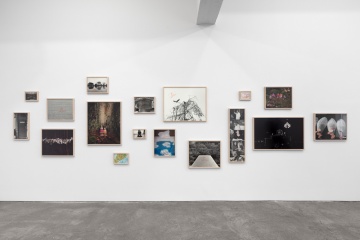
Sophie Calle, Bruce Conner, Paul Pfeiffer
Documents & Recitations
October 26, 2019 - February 8, 2020
Amy O'Neill
THE ZOO REVOLUTION
September 7, 2019 - October 12, 2019
Veronica Ryan
The Weather Inside
September 7, 2019 - October 12, 2019
Walid Raad
April 13, 2019 - May 18, 2019
Matias Faldbakken
February 21, 2019 - April 6, 2019
Alan Shields
January 10, 2019 - February 16, 2019
Sol LeWitt
Large Gouaches
November 3, 2018 - December 15, 2018
Peter Moore
Peter Moore: 1968
October 6, 2018 - October 27, 2018
Charles Gaines
May 3, 2018 - June 23, 2018
Joel Shapiro
March 24, 2018 - April 28, 2018
Robert Grosvenor
February 10, 2018 - March 17, 2018
Beatrice Caracciolo
Il Bosco Lontano
January 6, 2018 - February 3, 2018

 Back to all Member Galleries
Back to all Member Galleries






